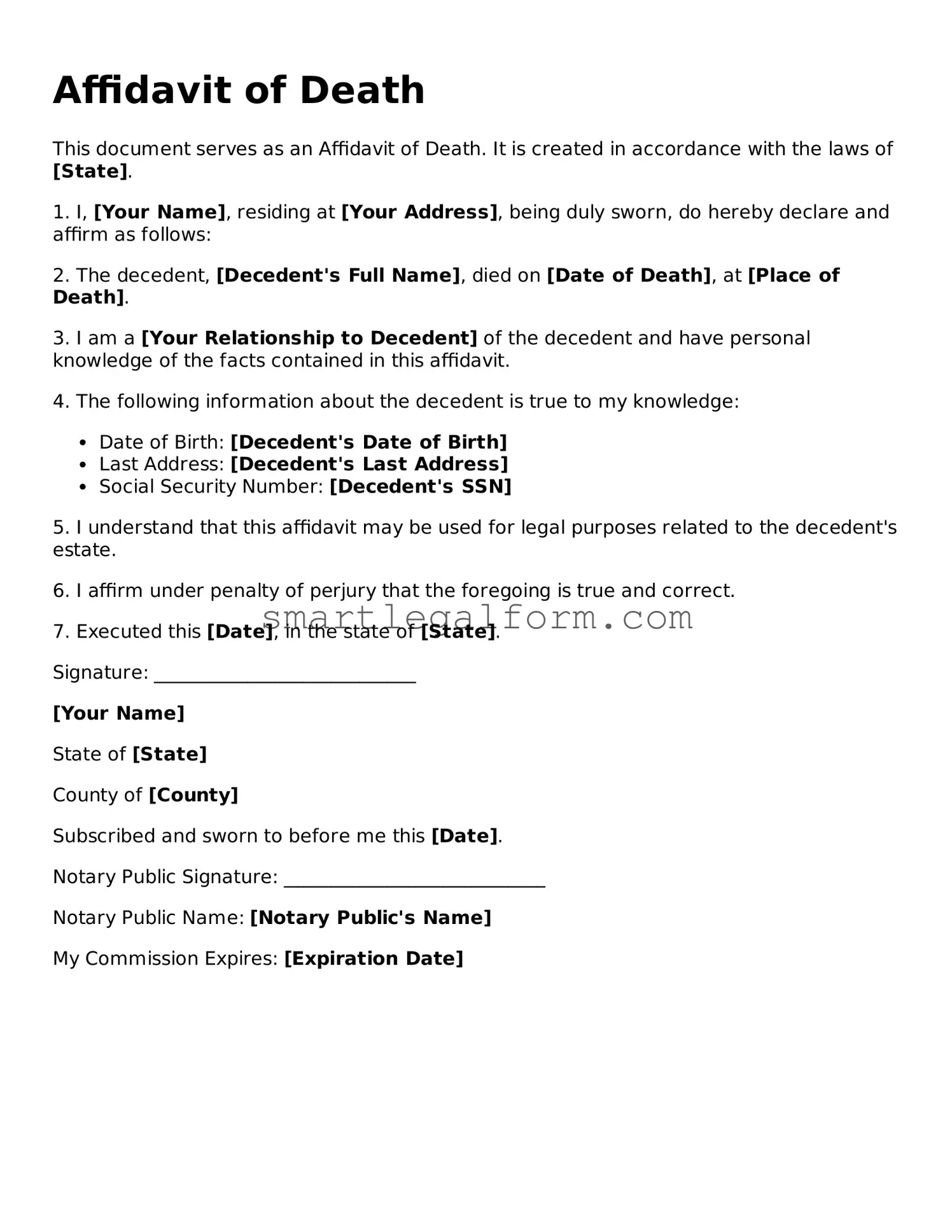Affidavit of Death
This document serves as an Affidavit of Death. It is created in accordance with the laws of [State].
1. I, [Your Name], residing at [Your Address], being duly sworn, do hereby declare and affirm as follows:
2. The decedent, [Decedent's Full Name], died on [Date of Death], at [Place of Death].
3. I am a [Your Relationship to Decedent] of the decedent and have personal knowledge of the facts contained in this affidavit.
4. The following information about the decedent is true to my knowledge:
- Date of Birth: [Decedent's Date of Birth]
- Last Address: [Decedent's Last Address]
- Social Security Number: [Decedent's SSN]
5. I understand that this affidavit may be used for legal purposes related to the decedent's estate.
6. I affirm under penalty of perjury that the foregoing is true and correct.
7. Executed this [Date], in the state of [State].
Signature: ____________________________
[Your Name]
State of [State]
County of [County]
Subscribed and sworn to before me this [Date].
Notary Public Signature: ____________________________
Notary Public Name: [Notary Public's Name]
My Commission Expires: [Expiration Date]
